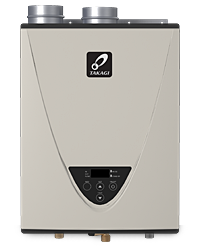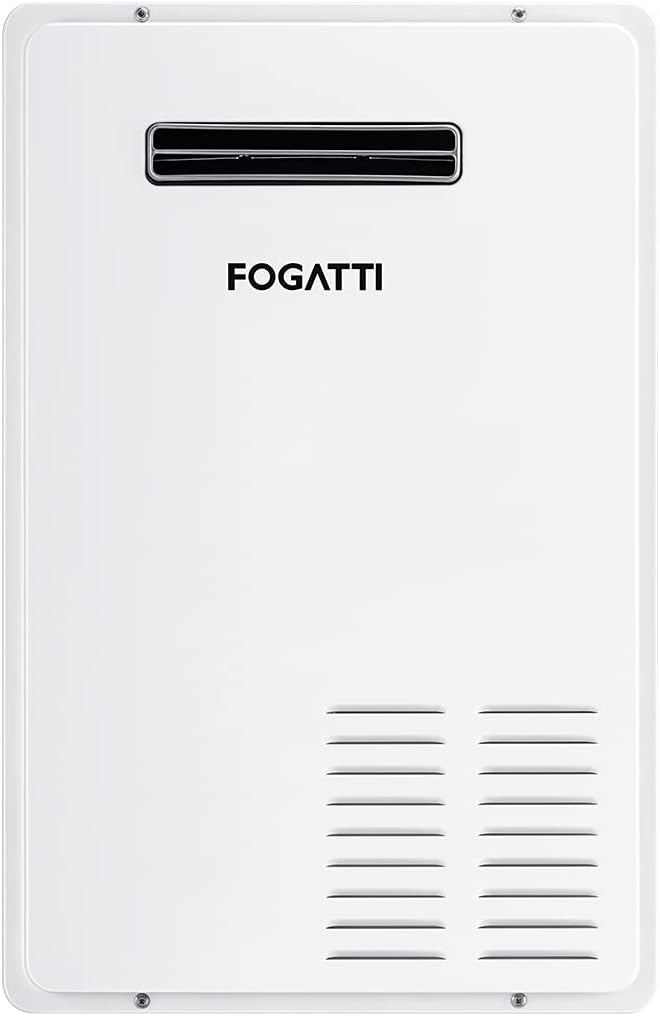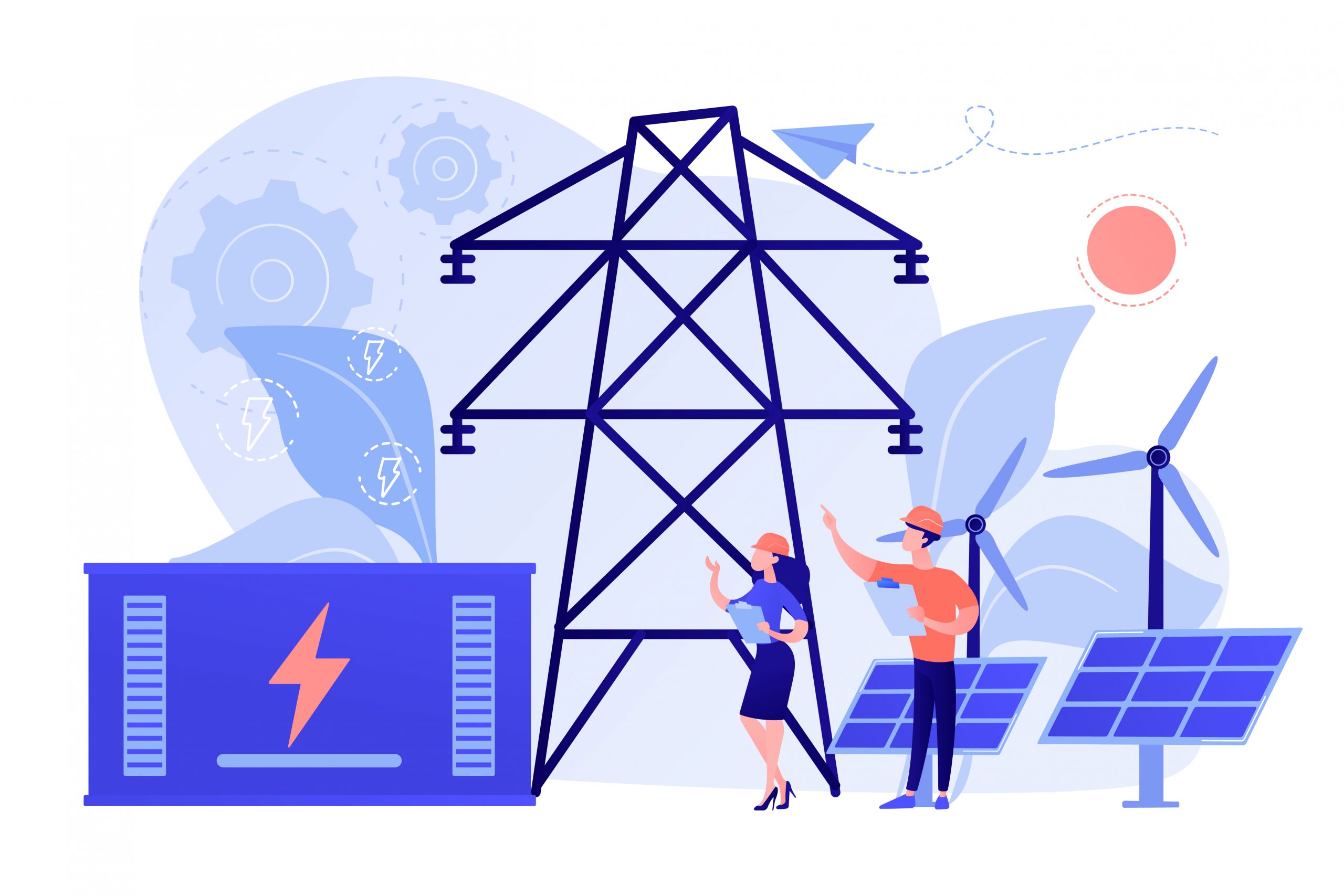Best gas tankless water heaters in 2022
Moving to a tankless gas water heater brings a bunch of benefits, from an unlimited supply of hot water to energy bill savings.
Not only are tankless heaters space-saving and reliable; they’re also energy-efficient, meaning that almost all the gas they consume is deployed towards heating water.
While gas heaters are usually more expensive than electric models, that upfront investment is offset over time, with most people seeing a 30-40% reduction ($100+ per year) in heating bills. If you’re converting your home to natural gas, you may also qualify for tax incentives.
Compared to electric heaters, gas tankless water heaters also have better cold-weather performance and a higher capacity, able to supply more water to larger households.
What is the best whole house tankless gas water heater?
What’s on this page?
Even though gas tankless water heaters have grown in popularity over the past few years, choosing among the many brands and models isn’t easy.
To help, we’ve analyzed the best-selling and most popular heaters online by key features such as flow rate, capacity, energy efficiency, and more. Here are the results!
How to choose a Gas Tankless Water Heater
Deciding on a few essential features will help identify the ideal tankless water heating system for your home.
Flow rate (GPM)
A heater’s flow rate is the amount of water (in gallons) it’s capable of processing per minute.
Gas tankless heaters for single appliances, RVs, and boats only need a small flow rate of between 2-4 GPM. Apartments and small-to-mid-size homes need a flow rate of between 3 and 5 GPM to function comfortably. Larger families, or homes in cold climates, may need up to 10 GPM.
Choose a heater with a high enough flow rate for your home’s needs. For reference, a single shower or modern laundry machine requires about 2 GPM, so most homes need at least 4 GPM to prevent a loss of temperature or flow when multiple appliances are running.
Heating capacity (BTU)
A heater’s capacity is the amount of gas, measured in British Thermal Units (BTUs), it can deploy to its heating elements. The higher the BTU, the more heating capacity a heater has.
A single BTU is enough to heat one pound of water by one degree. Apartments and mid-size homes need heaters with at least 150,000 BTUs. Larger homes and those in cold climates may need up to 200,000 BTUs, while point-of-use tankless heaters for single appliances need a minimum of 50,000 BTUs.
Because tankless heaters require larger amounts of gas in shorter bursts than traditional gas heaters, installing a tankless unit may require fitting a larger gas line.
Energy efficiency (EF)
All gas tankless heaters are highly efficient and use almost all of the energy they draw in heating water. At a minimum, you should expect a gas tankless heater to achieve an energy factor (EF) of 82%, which means that only 8% of energy is lost.
Many modern tankless water heaters use condensing technology to recirculate that lost heat, boosting efficiency above 90%.
Heater type
Gas tankless heaters can be sorted into several categories. These include whether they’re designed for indoor or outdoor installation and whether they or not they contain condensing technology.
Outdoor heaters don’t require ventilation but need extra safety features to prevent damage by the wind or freezing temperatures. This can add to the unit price. Indoor heaters don’t need weather protection but must be correctly vented.
Condensing water heaters contain technology that captures excess heat from the unit’s exhaust system and recirculates it to pre-heat incoming water. This means that it takes less time for water to reach the desired temperature and less energy is wasted. Condensing heaters can be up to 99% energy efficient.
Warranty and brand reputation
With regular maintenance, the US Department of Energy calculates that tankless heaters generally last for around 20 years. This is about a decade longer than the average tanked heater, which is more susceptible to leaks and bacterial growth.
Despite this, it’s important to shop from manufacturers that provide warranty protection, in case anything does go wrong with your new heater. Look for warranties that offer at least 10 years of heater exchanger protection and read the fine print to check for limiting conditions.
Our top picks
1. Best Gas Tankless Water Heater for mid-size homes –
Rinnai RL75I
- Reviews: 4.6 out of 5 from 550+ global Amazon ratings
Capacity: 180,000 BTUs
Flow rate: Up to 7.5 GPM
Efficiency: 82%
Type: Non-condensing | Indoor
If your home has 2 or 3 bathrooms, we think the Rinnai RL75I is the best value tankless gas heater for you. Its high capacity and flow rate make it one of the more powerful tankless heaters on the market, capable of running two showers or multiple kitchen appliances without performance drops. Rinnai’s ThermaCirc360 technology ensures water stays consistently hot water for the duration of use, so there’s no temperature fluctuations or flow reductions. With no condensing technology, the RL75 isn’t the thriftiest heater on this page (see the Takagi below). However, Rinnai does sell a compatible recirculation pump that will increase the energy factor. An operating volume of 49 decibels makes the RL75I about as loud as a modern kitchen appliance, while its 12-year warranty on the heat exchanger is the second-longest on this list. Other features include Energy Star certification, convenient remote monitoring via Wi-Fi, and electronic ignition. The Rinnai RL75 is also certified for installation in trailer homes.
We recommend this heater for:
- Homes with up to 3 bathrooms
- Lower utility bills
- Great brand reputation
Or read our full review of the Rinnai RL75I
2. Best propane Tankless Water Heater – Rinnai V65iP
Reviews: 4.6 out of 5 from 1,800+ global Amazon ratings
Capacity: 150,000 BTUs
Flow rate: Up to 6.5 GPM
Efficiency: 82%
Type: Non-condensing | Indoor
With a mid-range flow rate and heating power, the Rinnai V65iP is a great option for 1 or 2 bathroom homes in need of a propane-powered heater. This non-condensing unit achieves the same efficiency as the natural gas model above and comes with Rinnai’s scale detection technology, which reduces the chances of heat exchanger damage. We like how the V65iP sensors activate at just 0.26 GPM, allowing for fine-grain temperature control at the sink or shower. Sync your smartphone to control the unit remotely over WIFI, and take peace of mind from Rinnai’s 10-year heat exchanger warranty. At 55 decibels, the V65iP is also quiet for a propane device. An outdoor version of this heater is available.
We recommend this heater for:
- Smaller homes up to 2 bathrooms
- High-efficiency propane heating
3. Best tankless gas heater for outdoor installation –
Camplux Pro
Reviews: 4.3 out of 5 from 45+ global Amazon ratings
Capacity: 150,000 BTUs
Flow rate: Up to 5.28 GPM
Efficiency: 92%
Type: Non-condensing | Outdoor
Outdoor tankless heaters need to be able to withstand severe weather conditions, which is something the Camplux Pro excels at. With water-resistant protection, electrical overload protection, and fan failure protection, it’s able to resist grade 8 wind speeds and keep your water warm no matter the conditions. The Camplux Pro’s high-efficiency flow control allows it to get the most from its 5.28 GPM flow rate and 150K BTU capacity, making it powerful enough for smaller to mid-size homes. This, combined with its efficient auto-activation sensors give it a highly impressive energy factor of 92%—one of the best available online. The Camplux Pro comes with a 1-year warranty.
We recommend this heater for:
- Smaller-sized homes
- Secure outdoor installation
Or read our full review of the Camplux Pro
4. Best tankless gas heater for larger families –
Takagi T-H3-DV-N
Reviews: 4.3 out of 5 from 430+ global Amazon ratings
Capacity: 199,000 BTUs
Flow rate: 10 GPM
Efficiency: 93%
Type: Condensing | Indoor
The Takagi T-H3-DV is a high-powered heater with enough capacity and flow rate for larger homes and families, who need to use several showers and/or appliances at the same time. In fact, this heater produces so much hot water that Takagi also recommends it for commercial use! As a condensing unit, the Takagi captures residual heat from its exhaust system and recirculates it to preheat incoming water. This creates a two-stage process that operates at 93% efficiency. With its large size and additional components, it’s worth noting that the heater is heavier than most, at 59 Pounds, so it may require sturdier wall mounts. The Takagi T-H3 is Energy Star certified, operates at 55 DB, and comes with a 15-year heat exchanger warranty.
We recommend this heater for:
- Large homes with up to four bathrooms
- Homes in cold climates
5. Best point-of-use / RV tankless gas heater –
Furrion 2.4 GPM
Reviews: 4.5 out of 5 from 140+ global Amazon ratings
Capacity: 60,000 BTUs
Flow rate: 2.4 GPM
Efficiency: 81%
Type: Non-condensing | Point-of-use
While its minimal flow rate and capacity are only enough for a single appliance at a time, the Furrion 2.4 GPM is a highly popular propane heater that fits most RVs, and is designed to operate at temperatures as low as 32 degrees. The Furrion contains the brand’s Vortex modulating technology, which keeps water heat consistent, along with dual-sensors that shut off the unit when it’s reached desired temperature. Fitting the Furrion into your RV should be a simple process, as the brand manufactures several door sizes for common models. The standard supplied door size is 16.14 x 16.14 inches. Other features included in the Furrion 2.4 GPM include VibrationSmart technology to help withstand uneven terrain and a wall thermostat that displays temperature, time, and pressure. Furrion offers a 2-year warranty on their RV heaters.
We recommend this heater for:
- RVs
- Boats
🔥Other popular Gas Tankless Heaters

Condensing technology – Noritz NRC66DVNG
One of the most recognizable brand names in water heating, Noritz has been producing heaters for over 60 years. The NRC66 is their condensing tankless unit, which contains an innovative heat exchanger and a built-in controller. The Noritz produces a flow rate of up to 6.5 GPM that’s enough to run multiple showers or kitchen appliances at the same time.
Runner-up for outdoor installation – Fogatti On-Demand Hot Water Heater
The Fogatti On-Demand heater contains anti-freeze and anti-exposure systems, meaning it’s able to withstand windy, wet, and cold conditions. The unit is also compatible with standard gas pipes, so if you’re switching over to a tankless heater from a traditional tank model, installation should be much easier.
Best US-designed – Rheem RTGH-95DVLN
– Rheem RTGH-95DVLN
Rheem is the leading name in US-engineered heaters, with the RTGH-95 demonstrating the brand’s super-efficient gas tankless technology. With an energy factor of 94%, this heater uses a stainless-steel condensing heat exchanger instead of the usual copper elements to provide an instantaneous supply of hot water.
Horizontal venting – EZ Ultra HE Natural Gas Tankless Water Heater
If you are struggling to find the right spot to install a tankless heater, the can EZ Ultra is worth considering. It can be vented horizontally or vertically and comes with a stainless steel horizontal vent pipe included as standard. The EZ Ultra is a condensing heater with added back-draft prevention and a flow rate of up to 3.4 GPM.
On a budget – Eccotemp FVI-12-NG
For those on a tight budget, the Eccotemp FV1 provides whole-home tankless heating in a compact, quiet design. With a flow rate of 3.6 GPM, it doesn’t offer the same heating power as other units on this list, but it can produce a steady stream of hot water for a single appliance at a time.
Best Gas Tankless Water Heater – Buying guide
Selecting the right size tankless water heater
Most tankless heaters are available in various sizes and powers, to accommodate different sized homes. Larger heaters have higher BTU capacities and higher flow rates, meaning that they’re able to supply hot water to a great number of appliances at the same time.
To find the right size heater for your home, you need to find your total required gallons per minute (GPM). Check your faucets, showerhead, and appliances for their listed GPM, either by checking labels or looking up their specs online.
We recommend heaters that can handle a minimum of 4 GPM for families with more than two people.
Understanding flow rate
It’s important to remember that nobody runs all of their faucets and appliances simultaneously, so there’s no need to seek out a heater that can handle an astronomical flow rate.
Most homes are able to operate comfortably with a heater that’s capable of providing water for 1-3 simultaneous showers and appliances, depending upon the number of people in the home.
This tends to work out at a daily maximum flow rate of between 4-10 GPM. However, point-of-use heaters designed for a single appliance, such as the Furrion above, can get away with much lower GPMs.
Another thing to remember when deciding upon capacity and flow rate is that the temperature of incoming water has a large effect on heater performance. In colder climates, heaters have to spend more energy bringing water up to temperature, so likely need a higher BTU and GPM rating.
 How much should a tankless gas heater cost?
How much should a tankless gas heater cost?
With more internal components and safety features, gas heaters tend to be more expensive than electric units. The average price for a gas heater is around $750, with point-of-use models available for less than $500, and large whole-house heaters going for +$1500.
You should also take into account the price of installing a gas heater, as it’s far more likely that you’ll need professional help than when fitting an electric model.
Most gas tankless units require gas pipes to be upsized, which isn’t a task you should take on without prior experience.
Despite these significant extra costs, many gas heater owners say that their machines were able to pay for themselves within a few years of use. In the majority of areas, the cost of natural gas heater beats electric, meaning that you’ll slowly recoup your upfront investment over time.
Tankless heater efficiency
Gas tankless water heaters are less efficient than electric tankless units, but they far surpass tanked heaters, with average energy factor ratings of 80-90%.
Some gas heaters contain condensing technology, which allows them to capture unused heat from the exhaust system and redeploy it to heating the water. This can boost efficiency above 90%.
The higher the altitude of your area, the more energy your gas heater will lose as it heats your water. As a general rule, heaters in homes over 4000 feet lose 4% of their BTU and another 4% for each additional 1000 feet.
What is a condensing heater?
Condensing gas tankless water heaters are designed to increase heating efficiency to an equal level with electric heaters. All gas heaters have an exhaust system, which emits air and heat that wasn’t used to increase the water temperature. Condensing heaters capture this residual heat and re-use it to heater water.
To do this, condensing heaters contain a second heat exchanger that pre-heats incoming water before it reaches the main heating component. This also means that the main component needs to spend less energy to bring water to temperature.
Non-condensing gas water heaters are also far more efficient than rational models. They’re also lighter, smaller, and less expensive, making them more suitable for some homes.
How to clean a tankless heater
Most heaters are designed with sediment screen filters, which ensure that the heating element isn’t damaged by small pieces of dirt and particulate matter in the water supply. These screens should be removed and cleaned on a regular basis, depending upon the purity of your water.
Dissolved minerals, commonly referred to as water hardness, are the most common contaminant in water heaters and can build up on copper heating elements to the point where heater performance is severely affected.
Because of this, if you live in an area with hard water, it’s important to flush or “de-lime” your heater on an annual or 6-monthly basis. Flushing a heater involves running an acid solution (some people use vinegar or bleach) through the unit to remove the scale.
Installing a whole-house water filter on the mains water line before the water reaches your heater is a great way to increase the performance and lifespan of your new heater. This is especially true if you use well water, or live in an area with very hard water.
Gas tankless water heater vs electric tankless heater
For many people, the choice between a gas and electric heating system will already be made for you, depending upon the way your home is set up.
If you are trying to choose between the two fuel types, whoever, there are some pros and cons worth considering.
Electric heater pros
- Electric tankless units are cheaper to purchase and install than gas models.
- Electric heaters don’t require venting.
- The cost of electricity is less volatile than gas.
Electric heater cons
- Powerful electric heaters require several large circuit breakers, meaning you’ll need to make changes to your home’s wiring and service panel
Gas heater pros
- The cost of natural gas is likely to be lower than electricity in your area, meaning monthly savings.
- Gas tankless heaters are generally more powerful than electric heaters, able to operate in colder climates.
Gas heater cons
- Installation costs for gas tankless water heaters may be double those for electric tankless heaters.
- Fitting the correct ventilation system for your heater can take up more wall space compared to an electric heating unit.
Tankless vs tank heaters
These days, most new homes are fitted with tankless heaters rather than traditional tank models. This is for a few main reasons:
- A typical gas-fired tank wastes 40 to 50 percent of the fuel it burns, whereas tankless heaters can operate at 80-99% efficiency.
- The best tankless water heaters provide hot water in less than 10 seconds.
- Most reputable tankless heater manufacturers make units that last for decades, with some Rinnai owners reporting 30-year lifespans!
- Because they don’t store large amounts of water, tankless heaters won’t flood your basement or harbor dangerous bacteria.
FAQ – Best Gas Tankless Water Heater
How does a gas tankless water heater work?
Gas tankless heaters use a series of flow sensors to detect when a hot water appliance in your home is turned on, and begin heating water as it passes through the unit.
Natural gas is used to heat the heat exchanger, which heats the water. Most heaters contain a series of copper coils that effectively transfer heat into the water. The more coils within a heating unit, the hotter water can get.
A minority of heaters use stainless steel or infrared tech, but no matter the heating element, the whole process takes less than 10 seconds from sensor activation to hot water from your faucet.
What is the best tankless gas water heater?
We think the Rinnai V75I is the best value water heater for homes of average size and with average water usage habits. It can comfortably run 2-3 appliances or faucets at the same time.
For propane, we recommend the Rinnai V65iP Tankless Hot Water Heater. The V65 is our Best Buy pick in our propane heater category and delivers a substantial flow rate of 6.5 GPM. There’s also an outdoor option, meaning that you can install the Rinnai in almost any kind of property—trailer homes included.
How long do tankless water heaters last?
Gas tankless water heaters have an estimated operational lifespan of around 20 years, which is more than twice as long as the average tank boiler.
This is thanks to fewer moving parts, a more efficient heating process, and less chance of leaks or contamination thanks to the fact that tankless units don’t store large amounts of water. Conventional tanked heaters have a life expectancy of just 8-12 years.
How to install a tankless gas water heater
Install a gas heater includes fitting a venting system and correctly connecting gas lines to your unit—so it shouldn’t be attempted without professional help unless you have prior experience dealing with gas systems.
In fact, many manufacturer warranties, and some home insurance plans, are voided if you don’t have a certified professional deal with your gas supply.
Part of the reason that gas tankless heaters can be tricky to fit is that they require larger amounts of gas in shorter bursts than traditional tank heaters. Because of this, many models need a larger gas line than the standard ½” gas pipe.
Do gas tankless water heaters work in cold climates?
Tankless water heaters have to work harder in colder climates, which means they aren’t able to provide an optimal ratio of GPM per BTU. A colder climate means that a heater will require more gas to maintain a steady flow of hot water. However, there are many tankless gas heaters on the market that are powerful enough to meet this need.
In fact, gas heaters tend to be more powerful than electric units, which means they’re often more popular in colder areas. If you live somewhere cold, you may want to think about a gas heater with a capacity of over 180,000 BTU and a flow rate of above 7.5 GPM.
What is the best gas tankless water heater for RVs?
We think that the best gas tankless heater for use in RVs, campers, boats, and other vehicles with a permanent heater fixture is the Furrion 2.4 GPM. Designed for use on the road with shock absorption and anti-freeze protection, the Furrion should fit most popular RV models, and is even sold with different door sizes for retrofitting.
Do gas tankless water heaters need to be vented?
Yes. Any gas-powered heater requires venting to allow excess heated gas to safely escape the heater. Tankless heaters can be vented horizontally or vertically, allowing for several installation options.
How much electricity does a gas tankless water heater use?
Even though these heaters are powered by natural gas or propane, they still require a 120V outlet. Most modern heaters have electronic ignitions instead of traditional pilot lights, as electronic ignitors tend to be more stable and safe.
When running, gas heaters use a very small amount of electricity—a little more than standard light fixtures. Heaters with outdoor installation technology such as anti-freeze protection will draw slightly more power.
Read on! More information on Water Heaters
Affiliate Disclaimer: Cleancoolwater.com is proud to be a reader-supported website. To keep our content free, we may earn small commissions when you click on a link or buy products through our pages. Commissions do not affect our review process.














